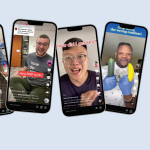January 6, 2021 was a shocking day for many. As their leaders encouraged and directed them, the mob of angry people - overwhelmingly comprised of White Americans who felt disenfranchised- stormed the US Capitol. They walked past armed police, pausing for social media posts while overtaking the buildings where Congress was conducting business. They posed in legislators’ offices and on the Senate floor, vandalizing and stealing as they went. The involvement and collusion of the police - videos of cops moving fences, welcoming and guiding the rioters, taking selfies with them - just confirmed that institutions and government continue to work the way they were designed - to protect certain parts of the populace.
We all know there would have been other outcomes if the race of the participants were different.
My first thought when watching the debacle and its carnage - the chickens have come home to roost.
Watching a White Supremacist insurrection at the DC Capitol was - for many of us - unsurprising. It was the logical next step in the ongoing war against us, a battle that has been ramped up exponentially in the Trump Administration. The problem is not how did this happen? but rather why didn’t you believe us?
It’s easier to ignore the guns when they’re not aimed at you, I suppose.
Advocacy has brought me into coalition with people from all over the world. I have learned to listen to people’s various contexts - how various social institutions and policies are set up and implemented, where organizations and governments falter in the HIV response, and why certain successes happen and other failures are permitted.
HIV has long been a story about marginalization. Medication and condoms are only one part: it is also about who is made vulnerable in a society, who is considered expendable, as well as strategies and policies to ensure and exacerbate those positions. In the HIV field, we have known that race and racism are central issues to the epidemic but the public health institutions and funders have been slow to intervene. The Black AIDS Institute put out the We the People report with key recommendations for public health institutions, funders and allies. HIV Racial Justice Now, a coalition of people of color in the domestic HIV space (full transparency: I am a member), developed a framework for HIV racial justice. Both identify the importance of history in understanding current contexts (e.g. we do not start out in the same place, as organizations or individuals due to race and racism), and the value of culture and community in moving forward.
We can develop tools and reports, but it’s difficult when large organizations, institutions and funders do not address racism except in the occasional outraged press release. We still see declarations, groups and leadership made up of White cis-gender men and women - even in HIV when we know the disproportionate burden of the disease in the US is amongst people of color. In the wake of the Covid pandemic and the racial justice uprisings, the American Public Health Association acknowledged that racism is a public health issue. What would that mean if every HIV organization, HIV funder and public health agency followed suit? What would it mean if there were resources spent in figuring out how to have racial justice in HIV programs, rather than more of the same public health interventions that continue to exclude or marginalize people of color, sex workers, people of trans experience, people who use drugs, people who are erratically housed, and people with disabilities?
Race matters. And not speaking about it, not focusing on it in a meaningful way keeps us in the same place, year after year, decade after decade.
Yes, some of our organizations are built on ideologies and policies that have treated us differently based on how far we are from a White norm. That doesn’t negate the amazing work that they do, but it does perhaps help explain the ongoing racial disparities in public health. When we talk about what needs to happen next - in HIV, in politics, in our advocacy, in our HIV organizations and public health partners - we need to center anti-racist practices. Why do our leaders look the way they do? Why aren’t more Black, Indigenous and other people of color in the mix? How do these mechanisms and structures prevent meaningful involvement of Black, Indigenous and other people of color?
The first step to dealing with a problem is acknowledging we have one.
In HIV and LGBTQ organizations and planning bodies (where most of my political work has been), we need to look at how racist our policies and practices are. It’s not just a matter of hiring a couple people of color: it’s assessing our ideas about what positions look like and how we relate to the people we serve. To be frank, most of the organizations continue systems that alienate and exclude Black, Indigenous and other people of color. It is not up to us to fix these organizations and planning groups: if they are serious about anti-racist work, then it is up to them to resource solutions. Some of that means changing the power structure: some people have to give power up (and most organizations falter at the redistribution of power).
I hope that the Biden/Harris Administration - and all in the HIV community - accept that we need to focus on racial justice in public health and HIV. I would start with reading the work and resourcing people already working in this area to address these facts.








Comments
Comments